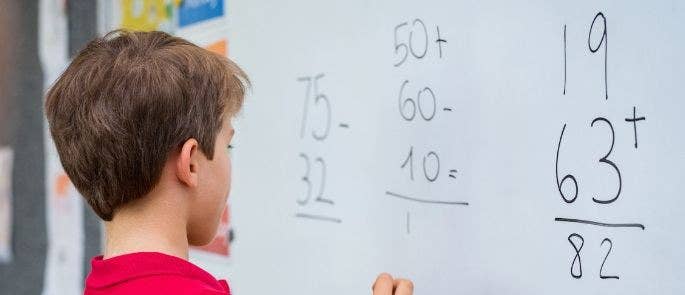How to Help a Child with Dyspraxia in the Classroom
Dyspraxia is a developmental coordination disorder and a lifelong condition. Approximately 10% of the UK population, and 5% of children in the UK, have some degree of dyspraxia.
Symptoms of dyspraxia usually present themselves in childhood, with most children being diagnosed between the ages of 7 and 10. Many more cases go undiagnosed until adulthood, if they get diagnosed at all. As somebody who works with children, you should know how to recognise the symptoms of dyspraxia and know how to help children who have it.
What is Dyspraxia?
Dyspraxia is a common disorder that affects fine and/or gross motor coordination in children and adults. It impacts:
- Articulation and speech.
- Memory.
- Perception and thought.
- Mental processing.
Dyspraxia doesn’t affect intelligence, but it can make daily life more difficult. It affects co-ordination skills, such as tasks requiring balance or playing sports, and fine motor skills, such as writing or using small objects.
Children with dyspraxia may display difficulties with self-care, riding a bike, and play. These continue into adulthood and present themselves in newer situations, like when the individual learns to drive.
These difficulties often co-occur, making daily life hard at times. They contribute to social and emotional difficulties, such as organisation problems, which can affect education and employment experiences.

What Causes Dyspraxia?
The cause of dyspraxia isn’t currently known, although it often runs in families. The NHS also state that you may be at risk of developing it if you were born prematurely.
Dyspraxia is more common in males. However, the reason for this may be because a number of cases in females go undiagnosed. A poll commissioned by the Dyspraxia Foundation found that 53% of female respondents said their primary school teachers were unaware of their difficulties, compared to 39% of males questioned. This trend also continued in secondary school.
Experts from the charity believe that these findings reflect perceptions that dyspraxia is a ‘male’ disorder, which leaves girls overlooked in the classroom. Furthermore, girls with dyspraxia may be better at masking their difficulties by making extra effort and asking for help from their friends.
What are the Symptoms of Dyspraxia in Children and Teens?
If you suspect that a child may have, or is ‘masking’, dyspraxia then it’s crucial that you pay close attention and know what symptoms to look out for. This is essential in order to give dyspraxic children the help they need.
Signs of Dyspraxia in Younger Children
Pre-school age children with dyspraxia may display the following signs:
- Lateness in reaching developmental milestones: rolling over, sitting, standing, walking, and speaking.
- An inability to run, hop, jump, or catch or kick a ball, even though their peers can.
- Difficulty with keeping friends or knowing how to behave in company.
- Little understanding of concepts like ‘in’, ‘on’, or ‘in front of’.
- Difficulties in walking up and down stairs.
- Poor pencil grip.
- An inability to do jigsaws and shape sorting games.
- An immature level of artwork for their age.
A school age child:
- Experiences the same problems as the pre-school child with dyspraxia, with little or no improvement.
- Under-performs in class but performs better on a one-to-one basis.
- Has a short attention span.
- Has trouble with maths and writing structured stories.
- Finds it difficult to copy from the whiteboard.
- Writes immaturely or with difficulty.
- Is unable to remember or follow instructions.
- Has poor organisation.

Signs of Dyspraxia in Teens
Secondary school is a time of change: physically, emotionally, and educationally. For a child with dyspraxia, encountering these changes and trying to transition from primary to secondary school is a difficult process.
As a result, teens with dyspraxia may:
- Display disruptive behaviour to try and hide their frustration and low self-esteem.
- Continue to get lost around the school building.
- Forget their homework, teachers’ names, and class location.
- Be isolated and not have many friends.
- Suffer from bullying as other students begin to realise they’re ‘different’.
- Have difficulty writing or typing.
- Avoid PE and sports activities.
- Talk too loudly or too softly in class.
How Can I Help a Child with Dyspraxia in my Classroom?
Teaching a child with dyspraxia can be frustrating, especially if the child displays disruptive behaviours. They may also need more time to process new tasks, so struggle to keep up to speed if they’re not given this time. However, they are capable of learning alongside their classmates, so long as their condition is recognised and they receive appropriate support.
To help a child with dyspraxia in your classroom, you could:
- Plan your seating. You should sit students with dyspraxia closer to the front of the room so they can see the board easier. Also ensure that they are a good distance from doors, windows, and display boards, as these may be distracting.
- Provide breaks. Students with dyspraxia should receive the opportunity to pause what they’re doing and have a break every so often. Even just walking around for a couple of minutes can help to improve concentration when they return to their desk.
- Consider alternatives to writing. Writing things down can be frustrating for a dyspraxic child and can make it difficult to keep up. Design activities that reduce the need for writing, such as providing fill in the blank exercises, matching exercises, or producing printed notes in advance. If the child displays good typing skills, allow them to type up their class notes and homework.
- Re-consider materials. Children with dyspraxia typically find it easier to write by applying a rubber grip to their stationary or using a wider pen or pencil. Your paper should always be lined (to act as a writing guide) and you should provide pens that are less likely to smudge.
- Be clear. Your directions and expectations should always be clear. Go over your instructions a few times to the dyspraxic child to ensure they sink in. Write your instructions down so the student can refer back to them, but be sure to write in short and clear sentences. Consider also creating a checklist so the student can tick something off when they’ve done it.
- Be prepared to help. Children with dyspraxia struggle to use their fine motor skills, so activities like cutting, sticking, and folding are especially difficult. If your lesson involves these activities, provide plenty of help.
- Use written and visual aids as much as possible. Use formatting to draw attention to important points, such as bolding. Break down text into manageable chunks through the use of bullet points and images. Furthermore, look into using audio books for some reading materials. This eases the pressure of reading and processing and saves mental resources for completing work instead.
- Keep an eye out for bullying. Students who have dyspraxia may be the victim of bullying, simply because they’re ‘different’. You should keep a look out for instances of bullying and respond appropriately if you do notice it. Additionally, celebrate awareness days and weeks in school so that other children can learn about the condition and work towards accepting it.
- Provide support and feedback. If the student has completed a piece of work well, or they’ve behaved particularly well that day, let them know.
- Maintain frequent contact with the child’s parents. Nobody knows the student better than their parents. Ask them for their advice and get them to keep you up to date with any developments. Similarly, let them know how their child gets on at school.
Children with dyspraxia can live a happy and fulfilling life so long as they receive appropriate support. Follow the tips in this article to ensure your classroom is helping them as much as possible.
What to Read Next:
- Female Autism: Is it Different and What Should I Look Out For?
- 7 Creative Classroom Exercises for Teaching SEN Children
- What are Specific Learning Difficulties (SpLDs)?
- How Does Dyspraxia Affect Adults?
- How to Help a Child With Dyscalculia in the Classroom
- Education Training Courses











